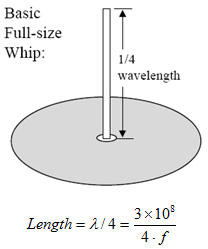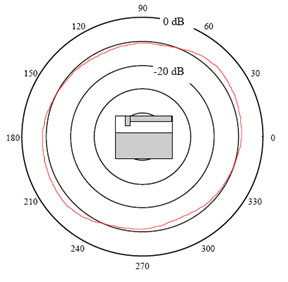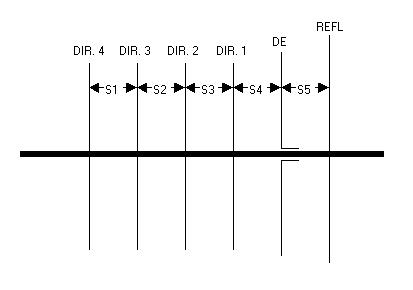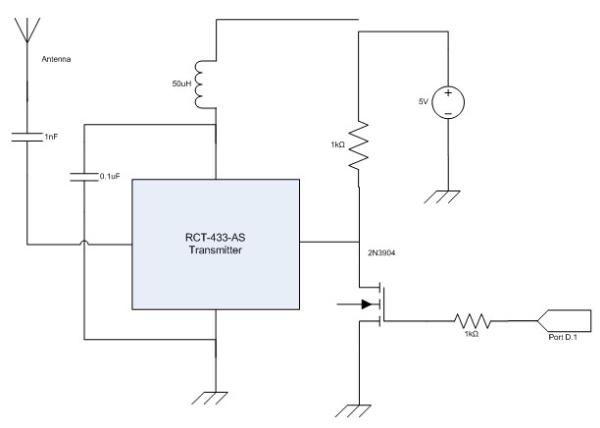This project designed and built a radio frequency (RF) receiver unit that can detect RF signals transmitted by beacons operating at 433MHz and provide information to help the user locate the beacons. The motivation came from wanting to track small attachable beacons that could be placed on personal items to locate them if lost or misplaced. While tracking multiple beacons with precise distance and direction measurements was the original goal, hardware and software limitations necessitated design tradeoffs.
Overall, the project provides a good demonstration of the design process from concept generation to implementation while navigating technical challenges. Care was taken to follow safety, ethical and intellectual property standards. Some areas for potential improvement were also identified. In the following commentary, I will analyze and discuss key aspects of the project’s design, methodology, results and lessons learned.
Project Inspiration and Initial Goals
The initial project inspiration of creating attachable RF beacons to locate lost personal items demonstrated a practical application and good problem definition. Tracking multiple beacons simultaneously with precise distance and direction readings would fulfill this goal. However, such an ambitious scope required thoroughly understanding RF principles, which the team realized they lacked. RF communication introduces complexities like signal interference, multipath effects and accuracy limitations at small distances/timescales that would challenge their capabilities.
Nonetheless, defining an ambitious high-level goal helped guide their work, even if complete fulfillment was not ultimately possible. Projects often evolve as understanding improves, so adjusting expectations based on emerging constraints is prudent. The key is maintaining a solution-oriented mindset to create a useful outcome, rather than persisting stubbornly with infeasible plans. This team demonstrated flexibility in reframing their objectives according to realistic technical boundaries.
Background Research and Key Design Choices

To adequately scope the project, background research into relevant RF concepts was essential. Topics like antenna types/characteristics, RF propagation principles and FCC regulations informed critical design decisions. Understanding Yagi-Uda directionality benefits led to its selection over an omnidirectional whip. Also exploring active/passive RFID options and understanding prototyping limitations properly steered away from a complex solution.

Overall the research seemed thorough and appropriately influenced the design trajectory. A few additions could have helped. For example, quantifying signal strength accuracy limitations may have set more realistic direction-finding expectations earlier. And investigating RF measurement hardware may have revealed options beyond software-based time-of-flight techniques. However, the iterative process of uncovering constraints and adapting objectives showed diligence in establishing viable technical parameters.

Hardware/Software Tradeoffs and Logical Structure
Examining interfacing limitations between hardware and software capabilities is key for defining a project’s scope. This team systematically considered multiple hardware/software decisions and documented the resulting impacts and updated goals transparently. Decisions like forgoing commercial RFID tags and direction-finding through time-of-flight triangulation demonstrated realistic evaluations of what could be accomplished given resources.
The logical structure diagrams also clearly conveyed system architecture at both a high level and implementation detail level. Interfaces between subsystems like the antenna, transmitter/receiver modules and microcontroller/display were comprehensively mapped out. This establishes a solid framework for others to understand, build upon or troubleshoot the design approach.
Areas for further nuance might have been characterization of sources and magnitudes of error in measurements. For example, quantifying anticipated inaccuracies from noise, interference or component tolerances could have set even more pragmatic expectations. But overall, a thoughtful tradeoff analysis guided the technical problem definition well based on constraints uncovered.
Technology Standards and Regulations
Proper consideration of relevant standards and regulations is an important part of any technical project. For a wireless device, FCC regulations take precedence. Demonstrating that the 433MHz band was chosen for its unlicensed status, and transmitter power was kept low showed regulatory compliance was a priority. Furthermore, discussing intellectual property attribution, describing any code or design borrowing transparently, as well as discussing ethics upheld like testing protocol showed due diligence. Some projects overlook or take such details for granted, so this extra focus was commendable.
Perhaps the only slight omission was not referencing specific FCC sections or Part 15 rules that were reviewed. But overall handling of these “soft” aspects, from standards to ethics, set a mature example of responsible engineering practice. Capturing such relevant context surrounding a project provides full transparency and defensibility should any questions arise.
Implementation Details and Results
The detailed schematics, code descriptions and component choices demonstrated a well thought out implementation. For example, describing the specific Yagi antenna dimensions calculated from formulas conveyed the thorough prototyping process. Modifications to open-source code were properly noted as well. Test descriptions outlined both successes and shortcomings found, suggesting an objective evaluation mindset.
Areas like converting analog signals or interfacing directly with peripherals could have been described at a slightly higher level with more context. But in general, openly documenting both positive and negative results without bias establishes credibility. Areas of weakness like signal integrity issues provide valuable lessons on areas for improvement, without diminishing the overall accomplishment.
System performance metrics and quantifications could have been more rigorous, such as characterizing antenna patterns or measuring range/accuracy. But given scope and resources, the evaluation provided was still reasonably substantiated. Overall, sharing candidly about technical challenges encountered offers good perspective into real-world engineering problems and their often imperfect solutions.
Conclusions and Lessons Learned
Lessons extracted from any project experience are extremely valuable. This team summarized key takeaways very well, such as acknowledging limitations in their own RF understanding that impacted goal-setting. Realizing the concept was overambitious given skills and adopting a more pragmatic redesign aligns well with good engineering judgment. Admitting flaws transparently also prevents perpetuating misunderstandings.
Suggestions for potential next steps also demonstrated growth, whether through more domain expertise or redefining the problem to suit existing skills/equipment better. No project achieves perfection, but openly assessing weaknesses and applying insights for future work is the real goal of any educational endeavor. This team concluded on a constructive note of humility and eagerness to apply lessons learned moving forward.
In summary, this project demonstrated diligence across multiple facets of the engineering design process from defining needs to implementing, testing and critically evaluating outcomes. Technical challenges were confronted head-on through well-reasoned decisions informed by clear research. Standards compliance, responsible practices and honest assessment of limitations set a positive example. Overall the methodology, work process, open documentation and constructive self-critique established this as a successful learning experience.
Follow this link for complete project: Building a High-Precision Radio Frequency Beacon Finder


